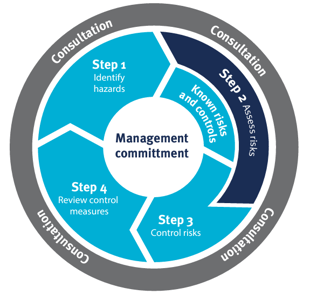Psychosocial Hazards – Understanding your obligations
Psychosocial hazards remain a hot topic within Australian workplaces. With recent legislation changes, businesses continue to navigate their way through the implications of these reforms.
The concept of psychological health within the workplace isn't new and is covered under the Work Health & Safety Act 2011. Employers are already under an obligation to ensure, so far as reasonably practicable, the psychological health of their workers whilst at work. The Act however provided no further assistance to employers on how to meet their obligations regarding psychological health.
After a comprehensive independent review of Work Health and Safety laws in 2018, the report made several wide-ranging recommendations including making regulations for managing psychosocial hazards. As a result Safe Work Australia published a model code of practice in 2022 providing a comprehensive list of common psychological hazards at work.
Workplace Health & Safety regulators across the states and territories then implemented their respective codes of practice, many taking effect across 2023. This means that all Australian workplaces are now required to “adopt a risk management process, including eliminating psychosocial risks, so far as is reasonably practicable, or if it is not reasonably practicable to eliminate psychosocial risks, by minimising them”.
This puts the responsibility firmly on employers shoulders. Helpfully, with the publication of the code of practice comes many free resources including surveys, toolkits, risk assessments and resources to help workplaces manage this important change.
Despite being a different code of practice across the country, all follow a similar 4 step process which includes a thorough worker consultation process.
4 step process
- Identify hazards
- Assess the risks associated with the hazards
- Implement control measures to reduce or eliminate risk
- Review control measures

Image: WorkSafe QLD
There are many benefits to effectively managing psychosocial hazards within your workplace including;
- Absence reduction
- Higher productivity
- Lower turnover
- Decreased workers compensation claims
- Increased employee engagement
A report by Beyond Blue and PWC shows an average return on investment of $2.30 for every dollar invested in workplace mental health.
Here are some tips to help implement effective change within your workplace.
- Understand it’s a journey, not a race
- Form a working group – ideally include Health & Safety, HR and Operations.
- Get leadership commitment and support upfront
- Allocate resources; time, people and money
- Plan out a roadmap including timeframe and milestones
- Progress beats perfection
- Seek advice from a professional if needed
Liz Tully is a Workplace Mental Health Specialist with 20+ years of experience in Human Resources roles.
Main image by eclosque via Canva
.png?width=190&name=IPA%20Logo%20Transparent%20(Hi-Res).png)






